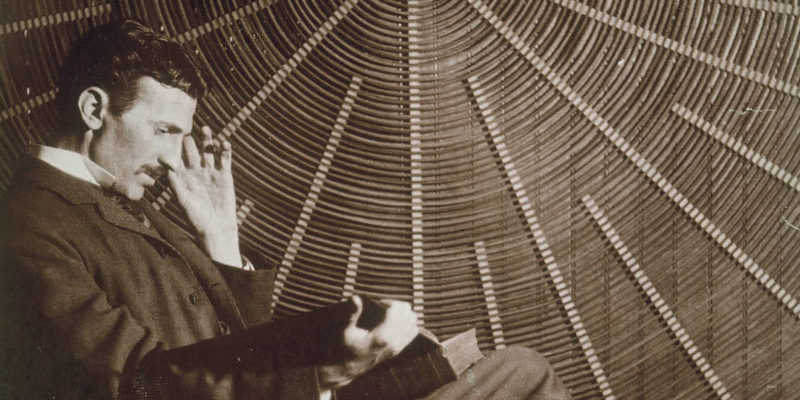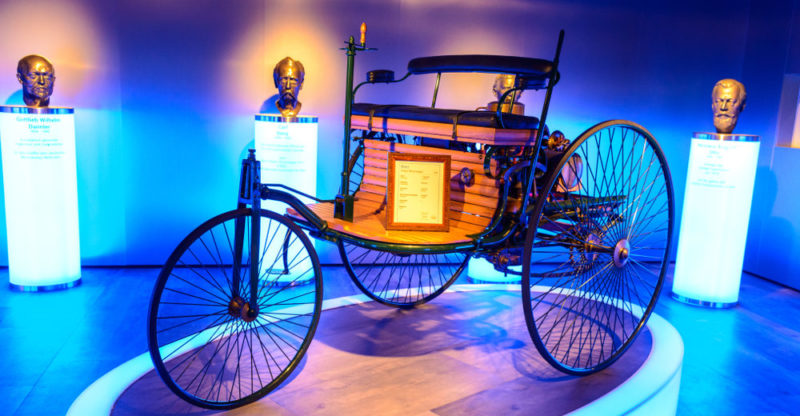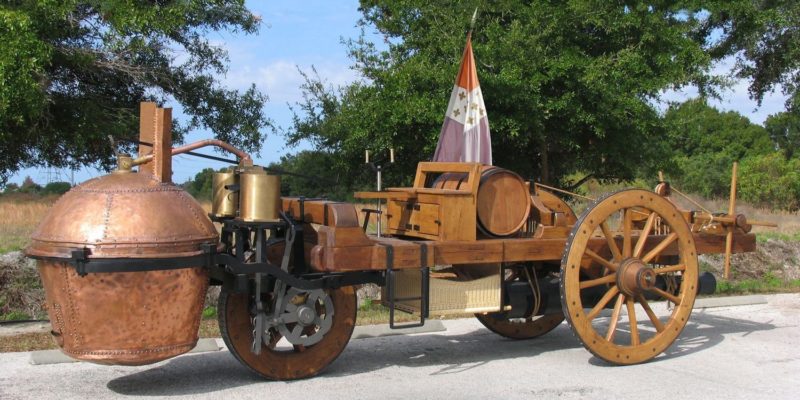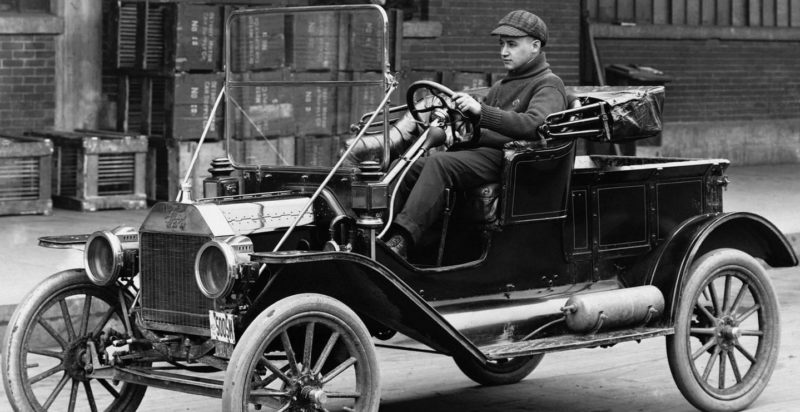We tell you the history of the automobile and the causes that led to its creation. Also, what are its characteristics and how it evolved.
The History of the Automobile
The history of the automobile involves the series of events, innovations and scientific-technological knowledge that gave rise to the automobile . They are the events that allowed it to evolve and finally become what is now part of our daily lives.
Called cars, cars or cars, land vehicles are one of the most successful inventions of the human being in terms of displacement. Its popularity during its more than two centuries of history has been such that a total number of 1.2 billion cars circulating today is estimated.
The word automobile comes from Greek and Latin, and supposes the union of autos (“by itself”) and mobilis (“moving”) , respectively.
Automobile Background

The development of the automobile would not have been possible without the technological and industrial advances brought about by the Industrial Revolution . Among them, for example, the steam engine, whose maximum developer was the British James Watt , and which allowed the invention of trains and, at the same time, the first attempts at automobiles.
Other essential technologies for the appearance of the automobile had to do with electricity . This phenomenon has been known since ancient times but has been generated and exploited in modern terms since the last quarter of the 19th century, thanks to the research of scientists such as Gramme , Tesla , Sprague, Graham Bell, among others.
Finally, knowledge of fuels was necessary , especially the internal combustion engine. In the mid-nineteenth century, when oil exploitation began in the world and the energy potential of this fossil substance was known, it was fully developed.
Why was the automobile created?
The automobile responded to the desire to transport materials or passengers over great distances and also at higher speeds. However, it was not the first human invention that tried to respond to that desire.
Previously there were carts pulled by robust animals , which is known as ” blood traction “. This transport had the disadvantage of the physical limitations of the animal.
The mechanization brought about by the Industrial Revolution offered an answer: a machine to do the job. One that could be repaired when it breaks down, that can be pushed to the limit and reach enormous speeds , that doesn’t tire out and that can be mass-produced, ready for use. This was the car.
Origin of the car

The invention of the automobile comprises different stages that we will see separately, but in strict terms of what we understand today as an automobile (a vehicle powered by an internal combustion engine and with electrical components) it is accepted that the first example in history was developed in Germany , by different engineers independently:
- Karl Benz designed his first model, called the Benz Patent-Motorwagen in Mannheim in 1885. His wife traveled some 80 kilometers to the city of Profzheim in 1888, as a way of demonstrating her husband’s invention, which had already been patented in 1886.
- Gottlieb Daimler and Willhelm Maybach independently designed their own car model in 1889 in Stuttgart. However, the Benz machine is considered to be the formal starting point of the automobile.
Steam Stage

The initial stage in automobile history began with a steam engine. Around 1770, French inventor Nicolas-Joseph Cugnot created a vehicle that took advantage of steam engine technology, with a 50-litre displacement vertical twin-cylinder engine .
With his second and improved prototype he managed to reach speeds of 4 kilometers per hour. As ironic as it may seem, with him he had the first car accident in history , when he lost control of the device and crashed into a wall.
Cugnot built a third version in 1771, which is still extant, and inspired William Murdoch, who built a similar steam car in 1784 , and Richard Trevithick, who did the same in 1801. These early vehicles allowed the invention of the parking brake. hand, speeds and flywheel, but they had the drawback of having to keep their boiler warm.
Petroleum fueled engine
The first tests with the combustion engine were held at the beginning of the 19th century, with relative success. Boats and motor models succeeded each other from 1807 . In 1860 the Belgian Etienne Lenoir successfully drove a vehicle with an internal combustion engine, propelled by coal gas .
Lenoir’s car mixed air and fuel and employed an electric ignition , in a two-stroke engine. That first model was used by Nikolaus Otto in 1876 to build and patent a four-stroke engine.
Based on this second model, Siegfried Marcus created the first “Marcus Car” , with a gasoline-based internal combustion engine, equipped with a low-voltage ignition system that he patented in 1883.
The next step was taken by the German Karl Benz with his first patented automobiles in 1886 , an event that is considered the formal beginning of the history of the modern automobile. From 1900 the construction of these cars were already a common fact in France and the United States. The foundations were laid for the start of the automotive industry.
Electric Car

Between 1832 and 1839, Robert Anderson invented the first electric vehicle , which was powered by non-rechargeable electric cells. At the same time, similar devices were circulating, the product of American engineers and others presented at the International Electricity Exhibition in Paris.
It was valued to be quieter and lighter than steam engines , but there was no way at the time to solve the dilemma of the gradual discharge of electric cells. However, Camille Jenatzy’s 1889 “racing car” reached a speed of 105 kmph, a record for that time.
Beginning of the automobile industry

The first automobile construction companies emerged at the end of the 19th century: the French Panhard et Levassor from 1889 and Peugeot from 1891. Although France was the pioneer in the invention of the automobile, the United States gave the automobile industry its maximum potential , thanks to the ideas of Henry Ford.
Ford created the “T” models , which were produced in 1908 in large quantities, thanks to the application of assembly lines, an innovative system that since then has been installed in the heart of human industries , the so-called “Fordism”.
Henry Ford, Henry Royce and Ettore Bugatti are considered the innovators of the automotive industry, responsible for its growth, expansion and worldwide fame, in what was called the “golden age” of motoring.
At that time , Ford also competed with Oldsmobile and Cadillac , which later merged into General Motors, founded by William C. Durant in 1908. The Dodge Brothers marked their presence since 1914, and anticipated the birth of Chrysler in 1925.
Shortly after, in 1926 Germany, the companies Daimler-Motoren-Gesellschaft of Stuttgart , manufacturer of the Mercedes, and Benz & Cie, in charge of Benz cars, merged. This is how the legendary Mercedes-Benz was born.
Importance of the competition
One of the aspects that most pushed the automotive industry forward was car competition, the sport linked to the car. Speed and safety contests started very early, in 1894.
In 1895 the first great automobile race took place , from Paris to Bordeaux and back, between June 11 and 13. The winner was Émile Levassor with a Panhard et Levassor with an average speed of 24.5 kilometers per hour over a distance of 1,175 km.
This type of contest gave enormous visibility to the car and the industry behind it , despite the fact that there were no shortage of accidents that exposed the danger that they also involved.
Future of the Car

The future of the automobile is uncertain . There does not seem to be a new model of car that will drastically replace the existing ones, despite the dreams that we reaped during the 20th century about flying cars and other similar vehicles.
The crisis in the industry is energetic and ecological: the burning of fossil fuels destroys ecosystems and contributes to climate change in the process. Furthermore, fossil fuels are a non-renewable energy source and will eventually run out. The industry response has been timid, but points to electric cars , such as those created by Tesla Motors Inc.
Automotive history timeline
- 1885. Benz invents the first car with a combustion engine.
- 1890. The Peugeot Type 2 prototype is announced.
- 1893. The Benz Victoria, the first racing car, is marketed.
- 1898. The first Renault car is built.
- 1900. The commercialization of automobiles begins in France and in the USA.
- 1910. The Ford Motor Company’s Highland Park factory opens in Detroit, USA.
- 1920. The first sedan car appears.
- 1928. The Plymouth debuts as the mid-priced model car.
- 1964. Ford conquers the market with its Mustang cars.
- 1990. Japanese brands flood the western market.
- 2000. Honda announces the Insight, a gasoline-electric hybrid in the US.
The above content published at Collaborative Research Group is for informational and educational purposes only and has been developed by referring to reliable sources and recommendations from technology experts. We do not have any contact with official entities nor do we intend to replace the information that they emit.














